Broken
Figure out why something isn't working and fix it.
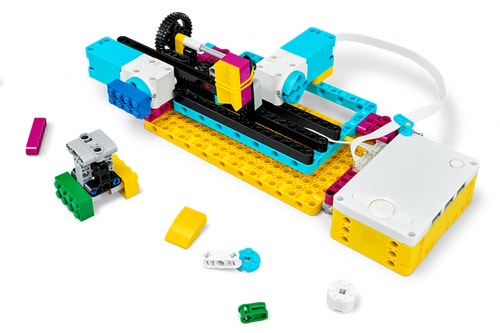
Lesson plan
1. Prepare
- Read through the pupil material in the LEGO® Education SPIKE™ App.
2. Engage (5 Min.)
- Use the ideas in the Ignite a Discussion section below to engage your pupils in a discussion relating to this lesson.
- Use the video to explain the lesson.
3. Explore (35 Min.)
- Have your pupils work in pairs to build the CNC machine, have them keep in mind that they're building a non-functioning machine.
- Ask them to run the program and to try to identify and correct the issues that they see.
- Remind them to document the problems and their solutions.
4. Explain (10 Min.)
- Facilitate a sharing session. Encourage your pupils to talk about the problems they’ve found and the solutions they came up with.
5. Elaborate (25 Min.)
- Ask each team to improve their CNC machine by modifying their build and/or program.
- Have them take turns sharing their improvements with the class.
- Don't forget to leave some time for tidying up.
6. Evaluate
- Give feedback on each pupil's performance.
- In order to simplify the process, you can use the assessment rubrics that have been provided.
Ignite a Discussion
Start a discussion about iteration or fixing things by asking relevant questions. Here are a few suggestions:
- What's usually your first reaction when something breaks?
- What will you do first if you're going to fix something?
- What's the last thing you fixed? How did you find the problem?
- What's a CNC machine? Do you know what it's used for?
Have your pupils watch this video to see what they're about to do.
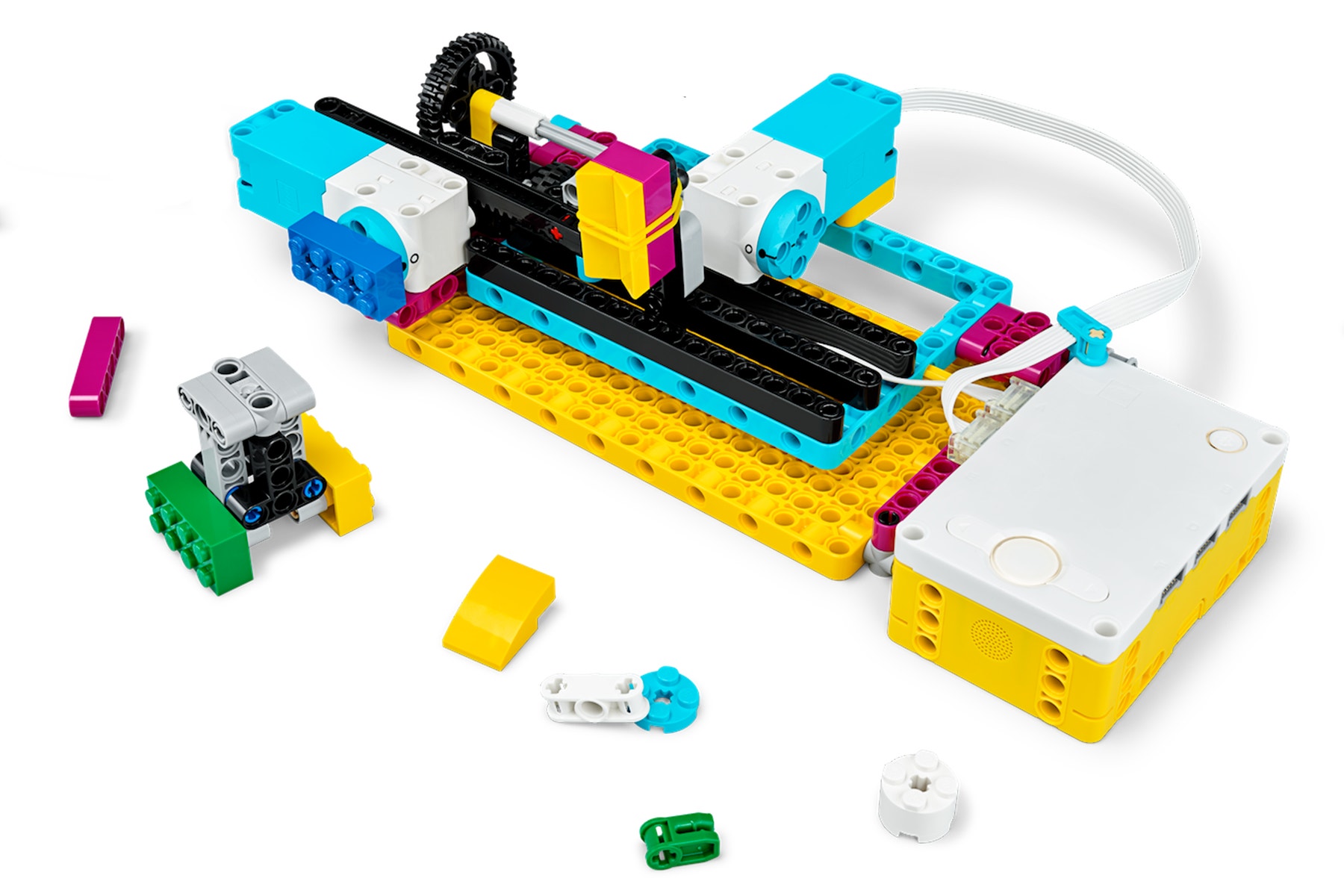
Building Tips
Partner Build
Split each team's building tasks in order to ensure that everyone is actively involved.
- Pupil A: top of the CNC machine
- Pupil B: bottom of the CNC machine, and needle

Pre-Designed shapes
You can use blank sheets of A4 paper for this lesson, but pre-designed PDFs of CNC cuts are provided. By using these pre-designed sheets, it'll be easier for your pupils to determine whether or not the CNC works.
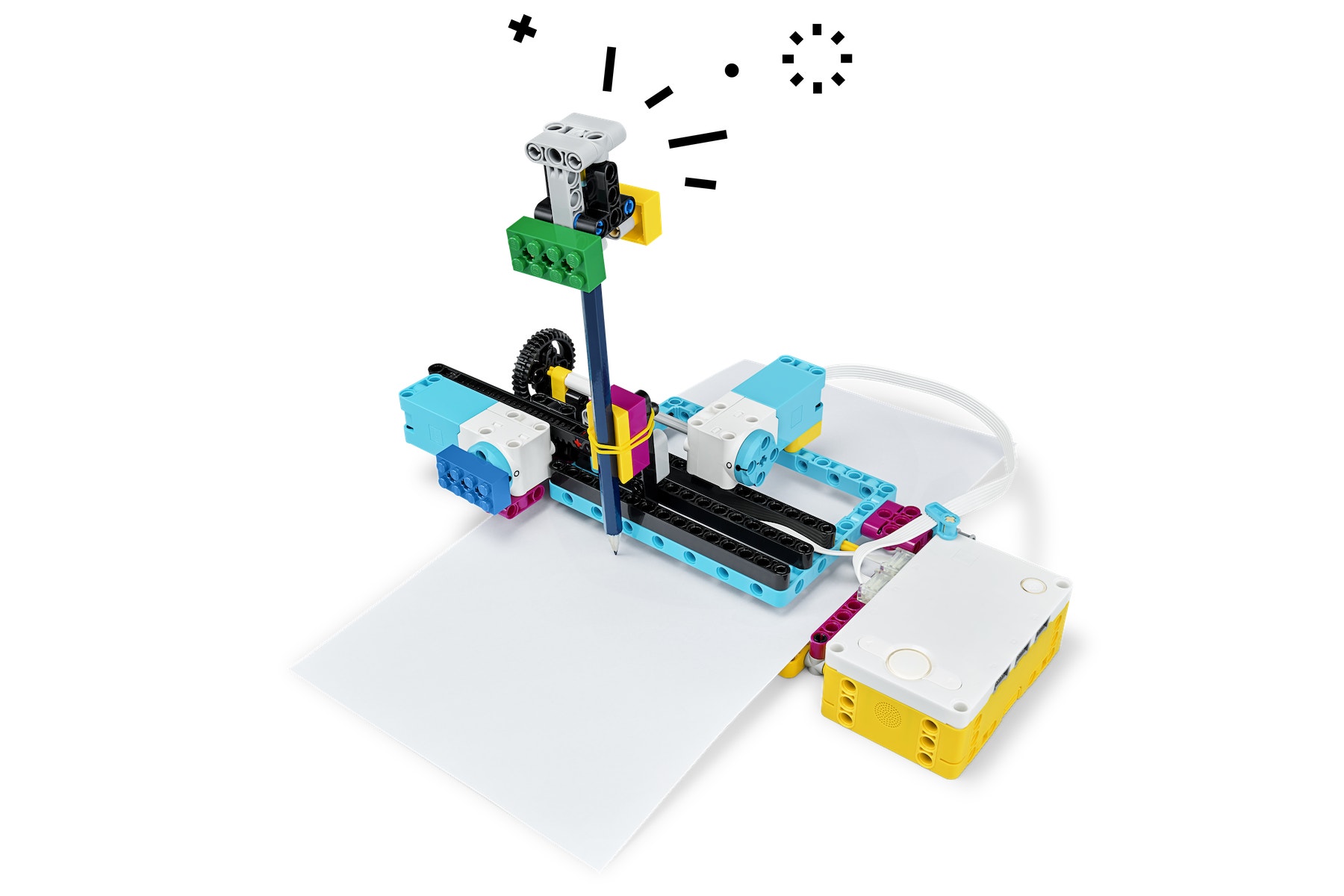
Loading the Paper
Here's how you load the paper:
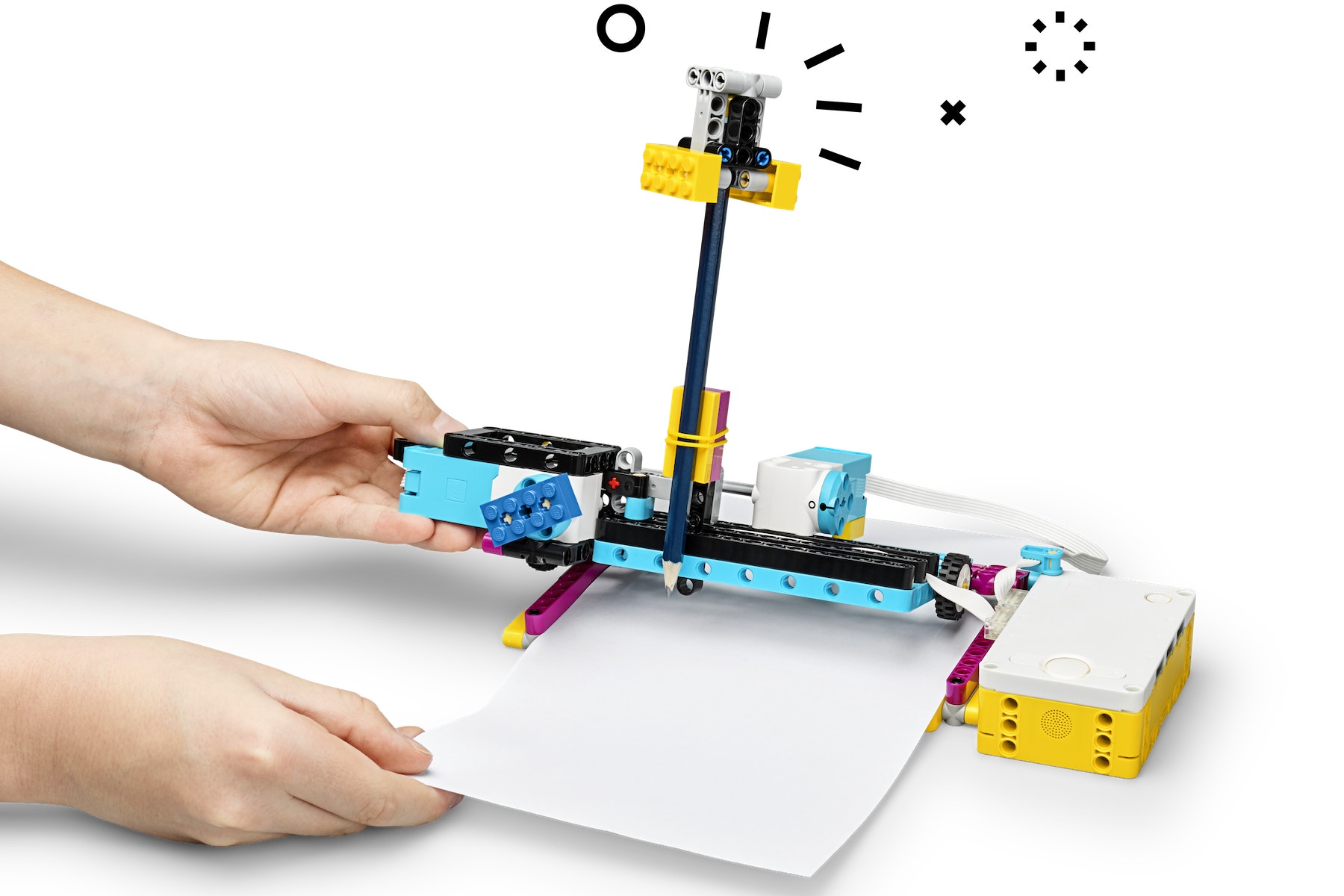
Looking for Issues
The CNC machine model has 4 real issues that must be fixed in order for the program to work as it’s meant to:
- A paper feeder wheel is missing, causing the y-axis to not work properly.
- The top of the CNC machine isn't correctly attached to the bottom.
- The paper feeder gears are inverted, causing the paper to enter the CNC machine too quickly.
- The pencil carriage isn't connected, causing the x-axis to work incorrectly.
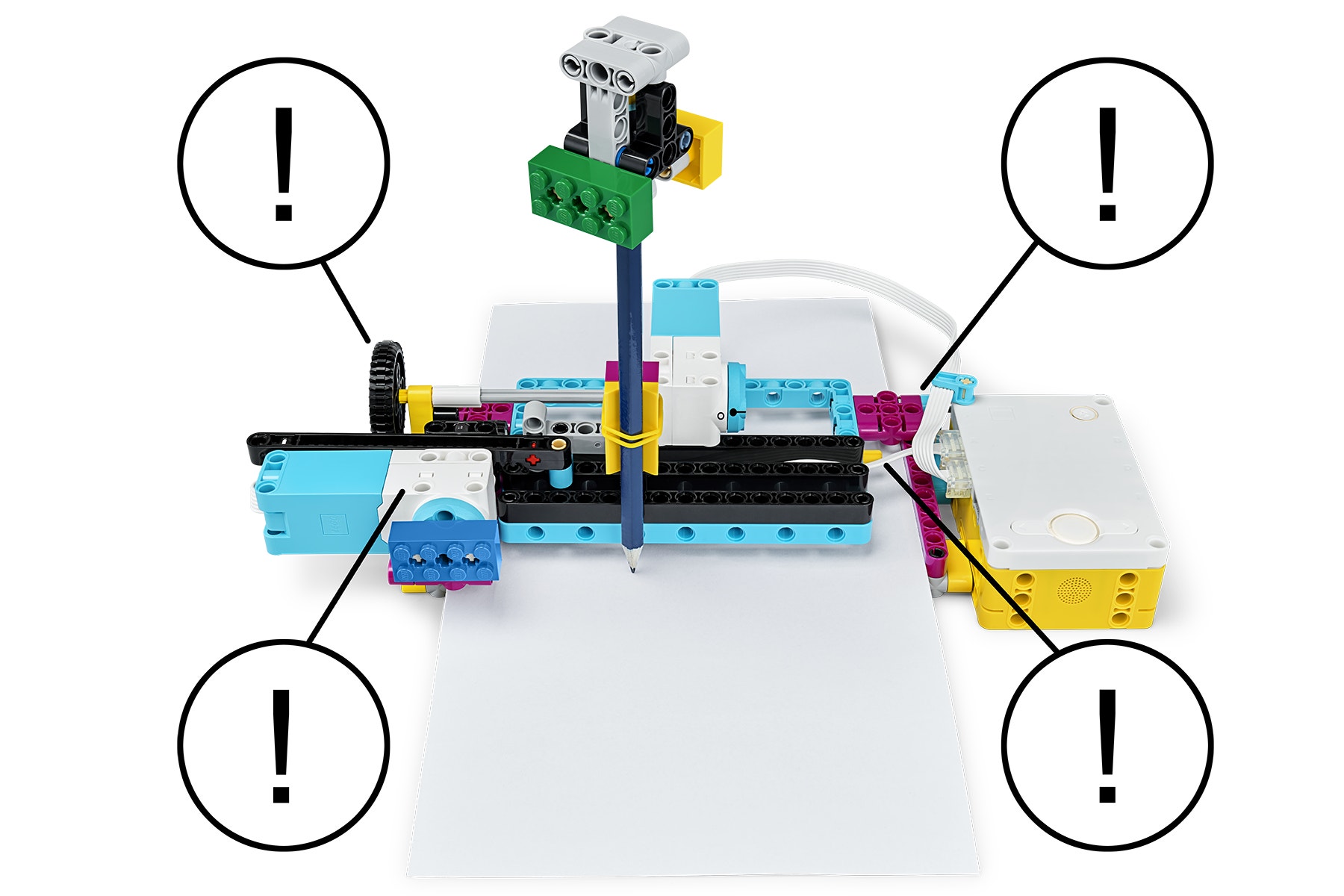
Easy Fixes
Here's the easiest way to fix these issues, but keep in mind that the objective of this lesson is for your pupils to find their own solutions.
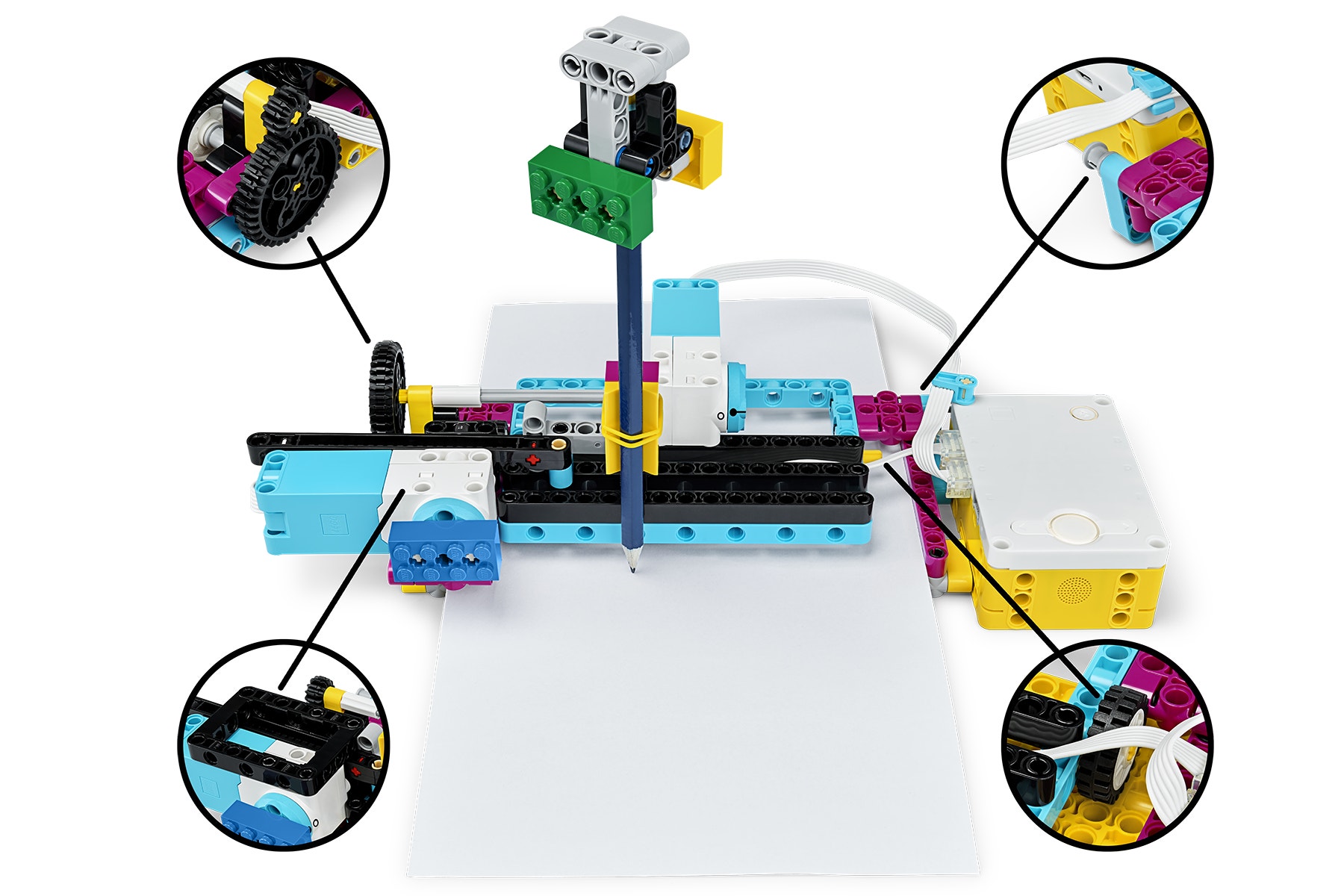
Possible Upgrade
Your pupils can upgrade their CNC machines by adding a Colour Sensor.
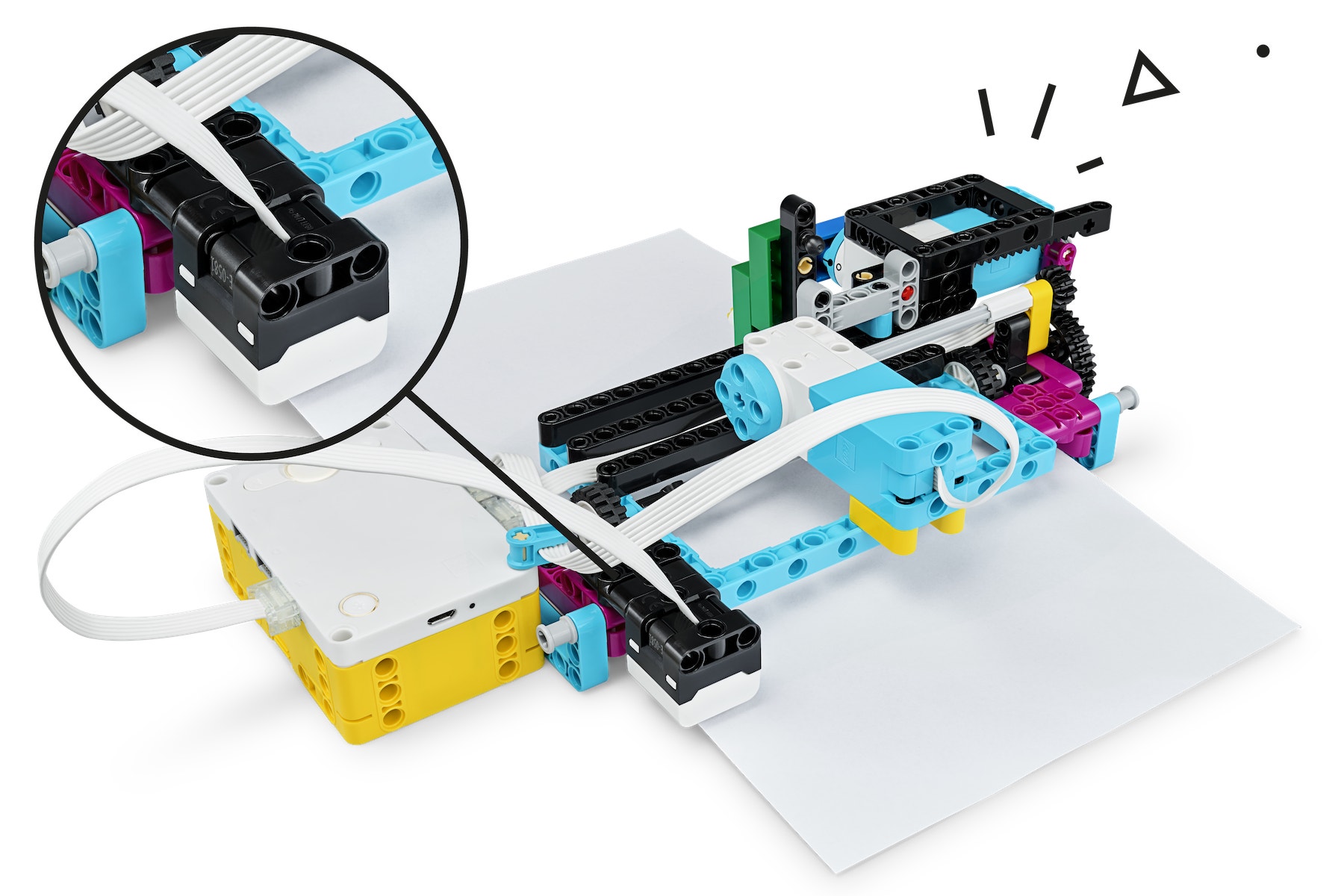
Coding Tips
Have your students write pseudocode or verbally describe what each line of the program does before activating it.
Main Program

Possible Solution
Remember to press the Left Button on the Hub to activate the programming stack.

Remember to press the Right Button on the Hub to activate the programming stack.

Differentiation
Simplify this lesson by:
- Suggesting a selection of bricks that your pupils can use to fix the issues
- Asking all of the teams to work on the same upgrade so that it's easier to evaluate the improvements
Take this lesson to the next level by:
- Having your pupils draw complex shapes on the printer, including curves
- Having your pupils transform this model into a 3-D printer by adding a z-axis
Assessment Opportunities
Teacher Observation Checklist
Establish a scale that suits your needs, for example:
- Partially accomplished
- Fully accomplished
- Overachieved
Use the following success criteria to evaluate your pupils' progress:
- The pupils are able to describe the function of an object.
- The pupils are able to describe the benefit of an object's features against needs.
- The pupils are able to construct effective arguments.
Self-Assessment
Have each pupil choose the brick that they feel best represents their performance.
- Blue: I can describe how things work.
- Yellow: I can describe in detail how things work, and I can highlight what they do well.
- Violet: I can convince someone that I've invented the coolest thing in the world.
Peer-Assessment
Encourage your pupils to provide feedback to one another by:
- Having one pupil use the coloured brick scale above to score another pupil’s performance
- Asking them to present constructive feedback to one another so that they can improve their group’s performance during the next lesson
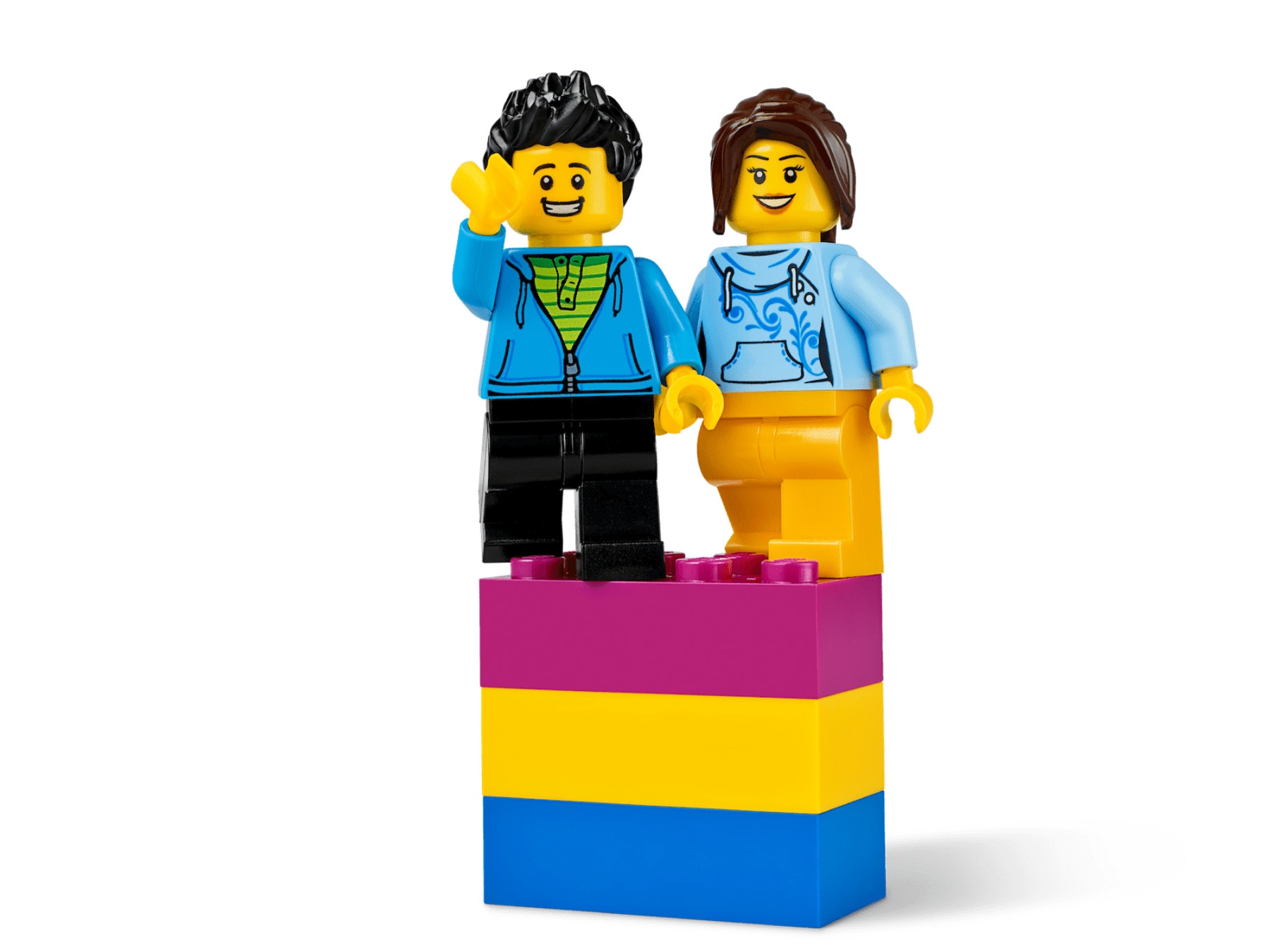
Language Arts Extension
To incorporate the development of language arts skills:
- Have your pupils work hands-off to role-play calling a customer support line.
▷ One pupil describes the problem.
▷ The other pupil explains how to fix it.
Note: This will require additional time.
Maths Extension
To incorporate the development of maths skills:
- Have your pupils find the gear ratio of the paper feed.
- Ask them to use appropriate language to describe how it controls the speed at which the paper enters the CNC machine.
- Have them explain (and try) what would happen if the gears were swapped.
Note: This will require additional time.
Career Links
The pupils who enjoyed this lesson might be interested in exploring these career pathways:
- Business and Finance (Entrepreneurship)
- Education and Training (Teaching)
- Media and Communication Arts (Broadcast Technology)
Teacher Support
The pupils will:
- Evaluate the performance of a design solution
- Iterate to find problems and then fix them
LEGO® Education SPIKE™ Prime Set
Pencils
CAS Computing Progression Pathways
Algorithms:
Represents solutions using a structured notation. (AL) (AB)
Programming and Development:
Designs, writes and debugs modular programs using procedures. (AL) (DE) (AB) (GE)
Information Technology:
Makes appropriate improvements to solutions based on feedback received, and can comment on the success of the solution. (EV)




